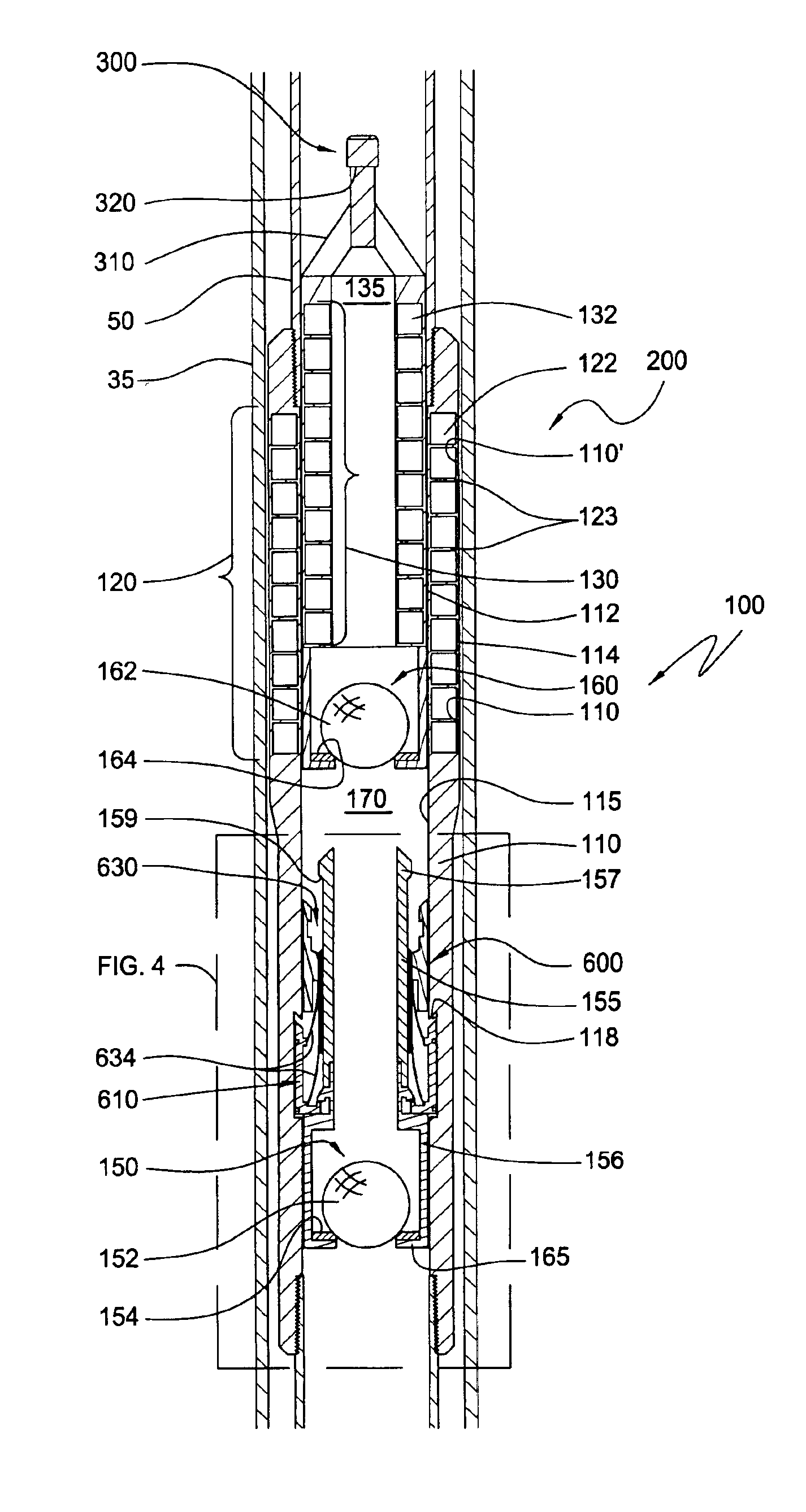Submersible electric pump
a technology of electric pump and submerged well, which is applied in the direction of piston pump, positive displacement liquid engine, borehole/well accessories, etc., can solve the problems of insufficient formation pressure to drive fluid upward in the wellbore, many hydrocarbon wells are unable to produce at commercially viable levels, and certain difficulties in connection with the use of sucker rods
- Summary
- Abstract
- Description
- Claims
- Application Information
AI Technical Summary
Benefits of technology
Problems solved by technology
Method used
Image
Examples
Embodiment Construction
[0038]FIG. 1 presents a cross-sectional view of a wellbore 10. As completed in FIG. 1, the wellbore 10 has a first string of surface casing 20 hung from the surface. The first string 20 is fixed in a formation 25 by cured cement 15. A second string of casing 35 is also visible in FIG. 1. The second casing string 35, sometimes referred to as a “liner,” is hung from the surface casing 20 by a conventional liner hanger 30. The liner hanger 30 employs slips which engage the inner surface of the surface casing 20 to form a frictional connection. The liner 35 is also cemented into the wellbore 10 after being hung from the surface casing 20.
[0039]The wellbore 10 is shown in a state of production. First, the liner 35 has been perforated in order to provide fluid communication between the wellbore 10 and a producing zone in the formation 25. Perforations may be seen at 55. Arrows 60 depict the flow of hydrocarbons into the wellbore 10. Second, a string of production tubing 50 is shown. The p...
PUM
 Login to View More
Login to View More Abstract
Description
Claims
Application Information
 Login to View More
Login to View More - R&D
- Intellectual Property
- Life Sciences
- Materials
- Tech Scout
- Unparalleled Data Quality
- Higher Quality Content
- 60% Fewer Hallucinations
Browse by: Latest US Patents, China's latest patents, Technical Efficacy Thesaurus, Application Domain, Technology Topic, Popular Technical Reports.
© 2025 PatSnap. All rights reserved.Legal|Privacy policy|Modern Slavery Act Transparency Statement|Sitemap|About US| Contact US: help@patsnap.com



